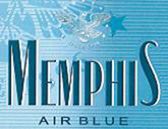In the judgment of the General Court of the European Union Court of Justice which is the subject matter of this article; during the stage of proving the genuine use of a mark, the issue of using the mark with different elements without altering its distinctive character was examined.
The application filed by Austria Tabak GmbH (Austria) on 16 July, 2001 for the European Union trademark "Air" (word mark) was registered on May 30, 2005 for the goods included in Class 34.
On 25 August 2016, Mignot & De Block BV (Mignot) filed an application for revocation in respect of the contested mark on the ground that that mark had not been put to genuine use. The request for revocation was directed against all the goods covered by the mark "Air".
EUIPO Cancellation Division upheld the application for revocation filed by Mignot on June 26, 2018 and decided to revoke all goods covered by the contested mark.
On August 24, 2018, Austria filed a notice of appeal for the decision in question before the Board of Appeal; however the EUIPO Board of Appeal upheld the revocation decision. The Board of Appeal stated as a justification for its decision that the distinctive character of the registered trademark had been altered in the mark which is the subject matter of the use.
Austria requested the annulment of the decision in the case filed against the Board of Appeal's decision.
The main claim of Austria was that the registered trademark was being actively used and that the way of use did not alter the distinctive character of the mark.

Austria included the following arguments in its application:
- The question whether a trademark has been put to genuine use requires that an overall assessment be carried out; therefore each piece of evidence is not to be analyzed separately, but rather together.
- In the review of the use of word mark, the color, font and style of the mark should not be taken into account. Owing to the fact that word marks consist of letters, words or word groups, the registration provides protection only for these elements. The protection offered by the registration of a word mark applies to the word in the application for registration and not to the individual figurative or stylistic characteristics which that mark might possess
- The cases could arise where two or more trademarks are used jointly and autonomously, with or without the name of the manufacturer's company. For this reason, the joint use of a mark with a company trade name or an earlier dated mark alone cannot undermine the function of the trademark as a means of identifying the goods in question.
The court stated in its decision that where several signs are used simultaneously, the relevant sign should still have a distinctive character regarding the origin of the goods in order to prove genuine use. The court also stated that such use should not alter the distinctive character of the registered sign, having regard inter alia to business practices in the relevant sector.
Trademark proprietors can make minor changes on the registered trademark without altering the distinctive character of the trademark for marketing and promotion requirements in time. When reviewing these variations made for this purpose, there should be slight changes between the registered trademark and the trademark in use, and when the trademarks are compared, it should be concluded that both are significantly identical.
Thus, it should be assessed whether the distinctive character of the mark as registered has been altered by the added elements based on the intrinsic qualities of each of those elements and the relative position of the various elements within the arrangement of the trademark.
The purpose of this assessment is to identify the intrinsic qualities and, in particular, the greater or lesser degree of distinctive character of the earlier mark used solely as part of a composite mark or jointly with another mark. The weaker the distinctive character, the easier it will be to alter it by adding a component that is itself distinctive, and the more the mark will lose its ability to be perceived as an indication of the origin of the product it designates.
Using registered trademarks with different elements or removing some elements from the trademark only depends on the distinctiveness function of the brand not being altered.
The sign which is used in trade:

The case-law acknowledges that several signs may be used simultaneously without altering the distinctive character of the registered sign. According to the Austria, that is the case here, since the evidence submitted shows simultaneous use of two autonomous and clearly differentiated signs, namely use of the 'house mark' MEMPHIS and use of another sign consisting of the contested mark AIR and the descriptive element 'blue'.
EUIPO contests the arguments of Austria while leaving open the question of whether the case-law on simultaneous use of two marks or signs is applicable. The Board of Appeal expressed that regardless of the word element 'MEMPHIS" which is autonomously protected, the word element 'BLUE' is not descriptive as submitted by Austria, and made an alteration in the distinctive characteristic of the trademark AIR.
In the decision of the Board, it was also stated that MEMPHIS and AIR word elements have average distinctive characters, and although BLUE is a commonly used expression in the tobacco industry and used for products with milder taste, when this expression is assessed on its own, it does not actually describe the feature of the product in its entirety and that it was an expression with weak distinctive character. However it couldn't be evaluated as descriptive. Moreover, it was stated that the use of the letters BL on the invoices, which is the abbreviation of the word BLUE, does not indicate that this expression is descriptive, since the assessments regarding the distinctiveness should be made according to the expressions on the product, not the expressions on the invoice.
Furthermore, when the Board examined all the evidence submitted, it stated that the word "AIR" was not used in isolation in any evidence, that it was invariably used in combination with the words "MEMPHIS", "BLUE" or "BLUE 100" and clearly not apart from these expressions. In the light of the evidence submitted, it was stated that the way it is used alters the distinctive character of the mark.
In addition, in all of the evidence submitted regarding the use, the expression MEMPHIS is visibly the dominant expression, which in return significantly affects the distinctiveness of the expression AIR since the relevant public no longer perceives the element AIR as an indication of the origin of the goods in question.
Finally, when the expressions MEMPHIS AIR BLUE and MEMPHIS AIR BLUE 100 are assessed as a whole, it is not possible to say that these expressions are broadly equivalent and differs only insignificant respects to the contested mark AIR.
When all of these are considered as a whole, the General Court upheld the decision of the EUIPO Board of Appeal and decided that the word mark "AIR" was not used in the form in which it was registered, or in any other way that constitutes an acceptable difference from the form in which it was registered. For these reasons, the case was dismissed.
This decision regarding proof of genuine use once again clearly demonstrates the importance of using the trademark without altering its distinctive character.
The content of this article is intended to provide a general guide to the subject matter. Specialist advice should be sought about your specific circumstances.

